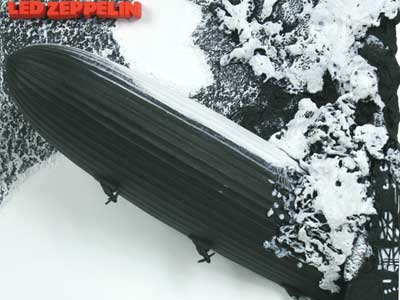100 years of rock 'n roll storage

Today we experience past music differently than any generation before. We can hear - and sometimes see - the performances that energized today's grandparents. And that changes everything.

What changed? Reliable high fidelity recording and storage. Back in the 50s that meant tape and 45s and LPs. Until the last 10 years it was still tape. In the 1910s all-acoustic recording technology was primitive, and the 160rpm discs - $1 for 4 minutes, about $12 today - catered to an affluent audience.
In 1960s it was almost impossible to listen to 50-year-old popular music, even if we had wanted to. Why? Because what little recorded music was available then had been recorded with poor equipment and distributed on unreadable wax cylinders or poor quality discs that we couldn't play. 60s phonographs often supported 78rpm, a format not popular until the mid-20s.
So high performance data storage makes it possible for young people today to hear the performances that thrilled their grandparents back in the 60s. That wasn't possible in 1963.
Music by the sheet
Contrast that with how popular music spread earlier. Printed sheet music was the medium. The local talent would buy the sheet music – which also wasn't cheap - to play the latest tunes. You were dependent on the quality of the local talent to appreciate the latest music.
What brought on this reflection is the webpage 100 years of rock 'n roll. While I don't agree with the choice of some samples, the combination of infographic style and embedded musical samples makes it a powerful tool to introduce millions to the evolution of modern rock.
Featured
Even more powerful than audio recording though is video recording. Events such as 1964's Teen Age Music International (TAMI) awards show that were recorded in an early form of high-def video capture much more of the cultural and performer's styles then any audio recording ever could.
But the ease of making and keeping audio was, until recently, a key differentiator. Take for instance the Jimi Hendrix concert recording at Royal Albert Hall in London in 1969 that was recently uncovered. There is no way a film recording of such quality could've been made then. But now? Much simpler.
The Storage Bits take
Would kids today be listening to the Beatles if it was only available on sheet music? I doubt it.
The 1960s marked a fundamental cultural shift in music, fashion and the arts. Along with the brutal folly of the Vietnam war it shaped a cultural battleground that has dominated the last 40 years of American political debate.
We can be thankful that unlike the longevity of our storage media, the participants in the 1960s culture war are marching off this mortal coil. Some things - such as inflexible ideological attitudes -are better off not kept forever.
Comments welcome, as always. My favorite piece of proto-rock is Benny Goodman's and Gene Krupa's 1938 rendition of Sing, Sing, Sing at their Carnegie Hall concert. It rocks! What's yours?